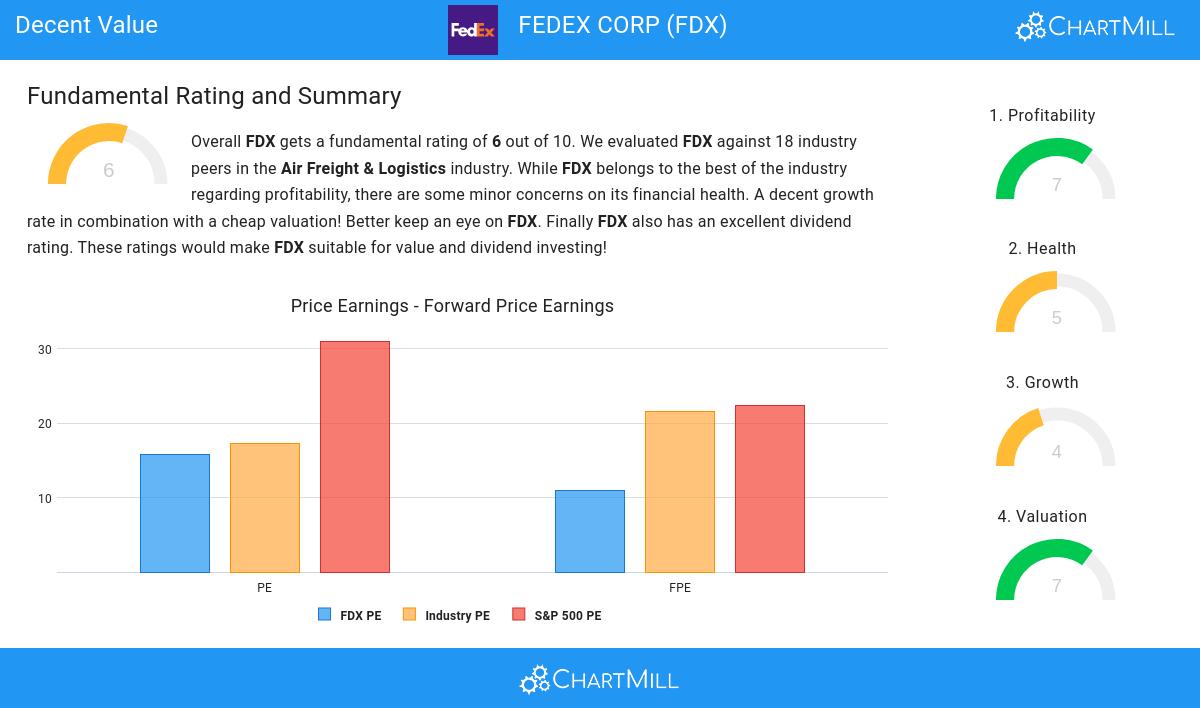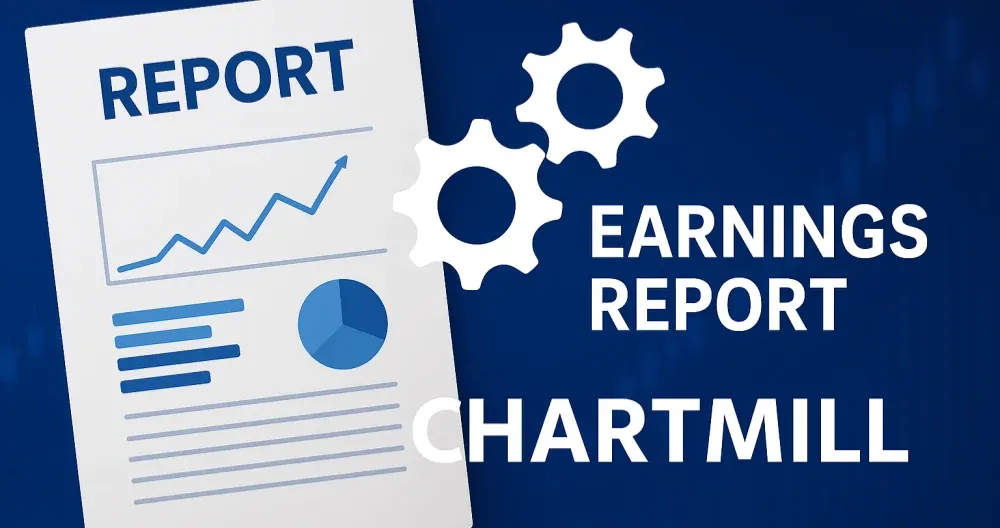NYSE:FDX is probably undervalued for the fundamentals it is displaying.
By Mill Chart
Last update: Oct 3, 2024
FEDEX CORP (NYSE:FDX) has caught the attention of our stock screener as a great value stock. NYSE:FDX excels in profitability, solvency, and liquidity, all while being very reasonably priced. Let's delve into the details.

Unpacking NYSE:FDX's Valuation Rating
ChartMill provides a Valuation Rating to every stock, ranging from 0 to 10. This rating assesses various valuation aspects, comparing price to earnings and cash flows, while considering factors like profitability and growth. NYSE:FDX boasts a 7 out of 10:
- Compared to the rest of the industry, the Price/Earnings ratio of FDX indicates a somewhat cheap valuation: FDX is cheaper than 66.67% of the companies listed in the same industry.
- When comparing the Price/Earnings ratio of FDX to the average of the S&P500 Index (31.01), we can say FDX is valued slightly cheaper.
- Based on the Price/Forward Earnings ratio of 11.00, the valuation of FDX can be described as reasonable.
- Based on the Price/Forward Earnings ratio, FDX is valued cheaply inside the industry as 94.44% of the companies are valued more expensively.
- When comparing the Price/Forward Earnings ratio of FDX to the average of the S&P500 Index (22.36), we can say FDX is valued rather cheaply.
- FDX's Enterprise Value to EBITDA ratio is rather cheap when compared to the industry. FDX is cheaper than 88.89% of the companies in the same industry.
- Based on the Price/Free Cash Flow ratio, FDX is valued a bit cheaper than the industry average as 61.11% of the companies are valued more expensively.
- The low PEG Ratio(NY), which compensates the Price/Earnings for growth, indicates a rather cheap valuation of the company.
- FDX has a very decent profitability rating, which may justify a higher PE ratio.
- FDX's earnings are expected to grow with 14.77% in the coming years. This may justify a more expensive valuation.
Profitability Insights: NYSE:FDX
ChartMill assigns a proprietary Profitability Rating to each stock. The score is computed by evaluating various profitability ratios and margins and ranges from 0 to 10. NYSE:FDX was assigned a score of 7 for profitability:
- FDX has a better Return On Assets (4.66%) than 66.67% of its industry peers.
- FDX has a better Return On Equity (14.87%) than 77.78% of its industry peers.
- The Return On Invested Capital of FDX (5.98%) is better than 61.11% of its industry peers.
- FDX's Profit Margin of 4.61% is fine compared to the rest of the industry. FDX outperforms 77.78% of its industry peers.
- FDX's Profit Margin has improved in the last couple of years.
- FDX has a Operating Margin of 6.69%. This is in the better half of the industry: FDX outperforms 77.78% of its industry peers.
- With an excellent Gross Margin value of 70.49%, FDX belongs to the best of the industry, outperforming 94.44% of the companies in the same industry.
Health Assessment of NYSE:FDX
To gauge a stock's financial health, ChartMill utilizes a Health Rating on a scale of 0 to 10. This comprehensive evaluation encompasses liquidity and solvency, both in absolute terms and in comparison to industry peers. NYSE:FDX has earned a 5 out of 10:
- FDX has a Debt to FCF ratio of 7.75. This is in the better half of the industry: FDX outperforms 61.11% of its industry peers.
Growth Analysis for NYSE:FDX
Every stock receives a Growth Rating from ChartMill, ranging from 0 to 10. This rating assesses various growth aspects, including historical and projected EPS and revenue growth. NYSE:FDX boasts a 4 out of 10:
- The Earnings Per Share is expected to grow by 16.91% on average over the next years. This is quite good.
- When comparing the EPS growth rate of the last years to the growth rate of the upcoming years, we see that the growth is accelerating.
- When comparing the Revenue growth rate of the last years to the growth rate of the upcoming years, we see that the growth is accelerating.
Our Decent Value screener lists more Decent Value stocks and is updated daily.
For an up to date full fundamental analysis you can check the fundamental report of FDX
Disclaimer
This article should in no way be interpreted as advice. The article is based on the observed metrics at the time of writing, but you should always make your own analysis and trade or invest at your own responsibility.
NYSE:FDX (1/2/2026, 1:13:29 PM)
291.174
+2.31 (+0.8%)
Find more stocks in the Stock Screener
FDX Latest News and Analysis









